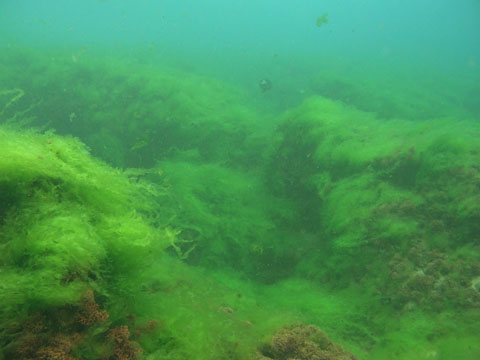Marine Microorganisms and Climate change
Interview with
David - Microorganisms are responsible for the planetary stability and the planetary habitability. Marine microbes are responsible producing most of the oxygen in our atmosphere. They also are the food source for most of the marine food webs that lead up to fisheries and up to humans. They not only capture solar energy and convert that into food that we have some great interest in but they also are very important for the nutrient balance and keep nutrients cycling in the ocean. Nutrients like phosphorous and nitrogen in particular.
Meera - What aspects of climate change are you looking into that are affecting microbial activity?
David - The climate change that we're mostly interested in is the effect of climate on ocean conditions. This is everything from the temperature of the surface ocean to the ocean currents to the interaction of the ocean with the atmosphere. All of these features set the condition for the environment: the habitat we call it. It's the habitat conditions that decide whether or not a particular group of microorganisms is selected for or against. The ocean habitat is the parameters that define its existence. That's everything from the chemistry of the habitat to the physics of the habitat to the microbes that live there. As the habitat changes so does the population of microorganisms. For example, some microorganisms prefer to live in acid conditions and some microorganisms prefer to live in warm water conditions and so on.
Meera - What are the effects of climate change on the sea temperature and things like that? What's happening to the microbial community?
David - We know based on first principles that as you change the ocean temperature you will deselect for certain groups of microorganisms. It will increase the rates of metabolism. You may change the balance between the production of oxygen and the consumption of oxygen. These are different metabolic properties that have different kinetic constants and different organisms responsible for them. If you change the environment basically what you run the risk of doing is decoupling otherwise coupled cycles of nutrients and energy and dissolved gasses in such a way that we change the conditions of our own planet in part because the atmosphere which we rely on has a very short turnover time. Therefore it has a very rapid response time. All you need is a slight perturbation in gross fluxes of dissolved gases, for example, to have an impact on the atmosphere.
Meera - If these changes were to happen that you've suggested, what are the larger-scale repercussions of that?
David - A lot of that repercussion would be to change the habitability of the planet by changing the oxygen budget of the atmosphere and therefore precluding forms of life that we're used to thinking about like humankind. At some point in time there will be a threshold level of oxygen below which we can't survive and certainly other organisms can't survive either, or a threshold of carbon dioxide that will build up very rapidly. These gases tend to be opposite in sign so oxygen is decreasing in the atmosphere while CO2 is increasing for the same reason that we're burning fossil fuels. Burning fossil fuels consumes oxygen and produces CO2. These are not good effects for humans. High CO2 is not good, low oxygen is not good but high CO2 and low oxygen is even worse. The ultimate repercussion would be that higher forms of life like humans and other vertebrates would somehow have a very difficult time surviving.
Meera - How exactly are you monitoring this? Where are your stations and how are you actually looking into it?
David - In terms of the atmosphere there were probably a million monitoring sites around the globe. In terms of the ocean there are two. Two comprehensive measurement sites: one at Bermuda and one near the island of Hawaii. These are called ocean time series sites and they're only two of a hopefully larger network that will be developed over the next couple of decades. To do the same thing that we're trying to do with climate modelling of the atmosphere - people are all familiar with weather forecasts. If you think about a weather forecast it is derived from more than a million measurements that are being made simultaneously around the globe. We would eventually like to have ocean forecasts that would be not unlike the weather forecast. Maybe more predictable but it would take a million sites around the globe to do such a thing. Probably even more than that because the ocean is much larger than the terrestrial environment that our weather forecasts are focussed. We have a lot of work ahead but it's something that's tractable to start building more observation sites around the globe or at least in sensitive regions of the planet.
Meera - How much time do we have in order to try and sort this out to stop it becoming a very big problem?
David - Well I think we're already behind the timeline here. The climate has been changing radically since we've been able to start measuring it back in the early 50s when we had the CO2 measurement programme. We have now CO2 measuring programmes at maybe 20 sites around the globe. We really have to get going on this because time is of the essence. One thing that might provide a little bit more time might be to find material engineering solutions on the planet that would somehow either slow down the rate of CO2 increase or stop it altogether and people have been thinking about different ways to do this. Any one of these geo-engineering that we develop would have presumably have intended as well as unintended consequences that we need to look at carefully before we adopt these wholesale.










Comments
Add a comment